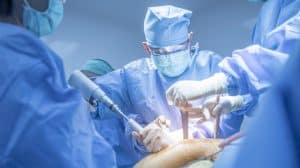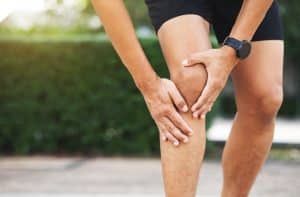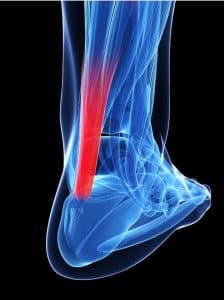Soft Tissue Reinforcement – An Adjunct To Selected Tendon Repairs
Prodomos Ververeli, MD
What are some of the challenges of tendon repairs?

Tendon repairs present several challenges for surgeons, primarily due to the unique structure and biomechanical properties of tendons. One significant challenge is the inherently poor healing capacity of tendons, resulting from their limited vascularity and cellular activity. This slow healing process can increase the risk of complications, such as adhesion formation, rupture of the repaired tendon, and postoperative stiffness. Furthermore, restoring the tendon’s biomechanical properties, including strength and elasticity, is critical for successful outcomes but can be difficult to achieve, particularly in cases of chronic tendon degeneration, pre-injury tendon contracture or massive tears.
Additionally, the choice of surgical technique and repair materials can impact the repair’s integrity and the patient’s long-term functional outcomes. Surgeons must carefully balance tension across the repair site, as excessive tension may compromise the repair or lead to tissue necrosis, while insufficient tension may affect functional recovery.
What are some of the benefits to soft tissue reinforcement?

In recent years, soft tissue reinforcement has emerged as a valuable adjunct to traditional tendon repair methods, offering improved biomechanical stability, flexibility, and rapid vascularity. This blog post will explore the importance of soft tissue reinforcement in Achilles, patellar, and quadriceps tendon repairs, delving into surgical techniques and products that promote tissue healing and successful patient recovery.
Achilles Tendon Repair:
The Achilles tendon is the largest and strongest tendon in the human body. Despite its strength, it remains vulnerable to rupture due to its limited blood supply and high tensile forces. Soft tissue reinforcement can mitigate the risk of re-rupture and improve biomechanical stability during the healing process.
Patellar Tendon Repair:
Patellar tendon ruptures often result from forceful quadriceps muscle contractions or chronic tendon degeneration. Optimal tendon repair and rehabilitation are crucial to restore patient mobility and minimize the risk of re-rupture. Soft tissue reinforcement, such as an extracellular matrix (ECM) manufactured graft, can be incorporated to provide additional strength and support.
Quadriceps Tendon Repair:
Quadriceps tendon ruptures typically occur in patients with pre-existing tendinopathy or systemic diseases affecting collagen metabolism. These injuries can lead to significant functional impairment if not adequately managed. Soft tissue reinforcement, like a synthetic or biological scaffold, can be added to the repair site to enhance strength and promote tissue healing.
Some factors to consider when choosing a product for soft tissue reinforcement are:

- Biocompatibility: The product should be biocompatible, which means it should not elicit an adverse immune response, cause inflammation, or lead to rejection by the patient’s body.
- Mechanical properties: The product should have mechanical properties that closely mimic the native tissue’s tensile strength, elasticity, and durability. This is essential to provide adequate support to the repaired tendon and prevent re-rupture or failure.
- Suture retention: The product should have good suture retention properties to enable secure fixation and maintain the integrity of the repair.
- Ease of use: The product should be easy to handle, manipulate, and apply during surgery, which can potentially reduce the surgical time and minimize the risk of complications.
- Resorbability: If using a resorbable product, it should degrade at an appropriate rate, allowing the patient’s native tissue to gradually take over the load-bearing function without causing premature failure of the repair.
- Integration with host tissue: The product should facilitate integration with the surrounding host tissue, promoting healing, and tissue remodeling for a strong, functional repair.
Incorporating soft tissue reinforcement in Achilles, patellar, and quadriceps tendon repairs can significantly improve patient outcomes by enhancing biomechanical stability, flexibility, and rapid vascularity. A thorough understanding of the available surgical techniques and products is crucial for surgeons to optimize tendon repair and rehabilitation, ultimately leading to better patient outcomes and satisfaction.
To learn more about surgical products designed to improve patient outcomes, please visit:




